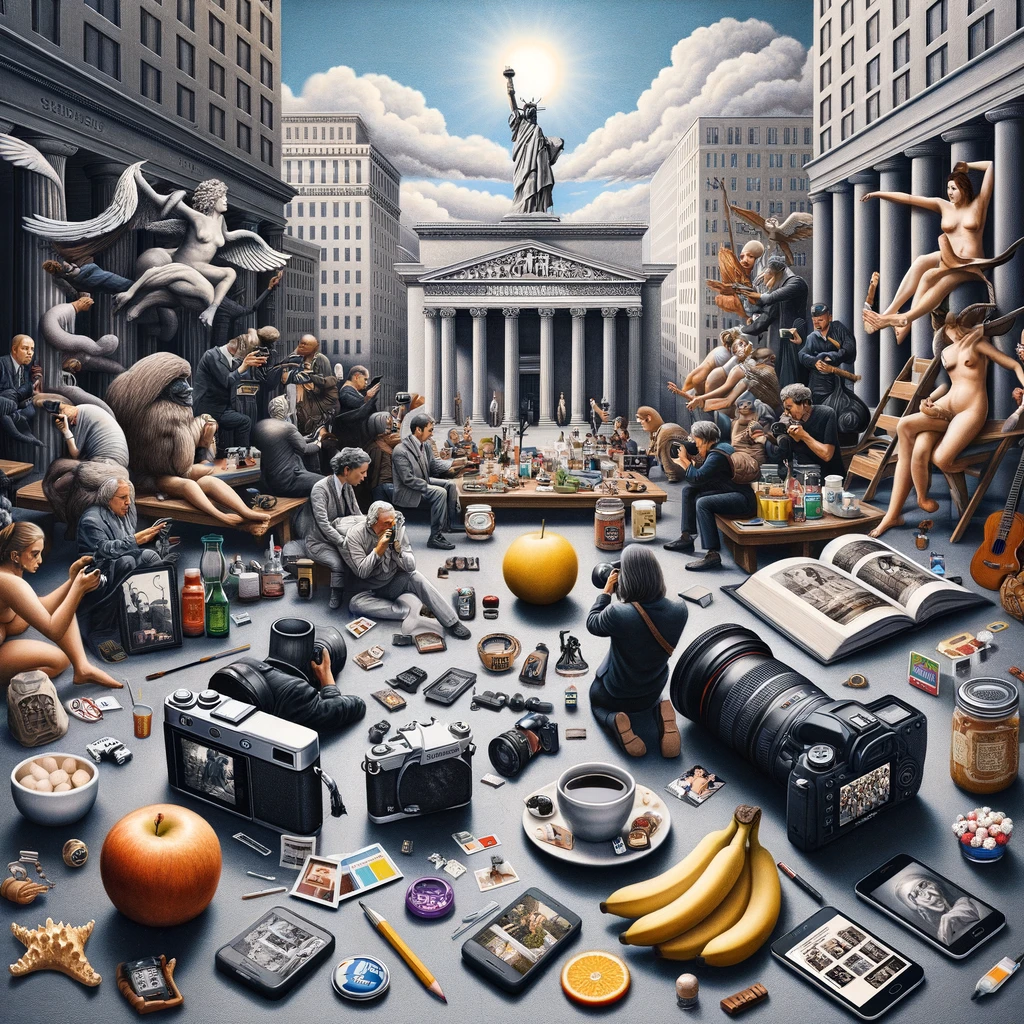Susan Sontag’s “On Photography,” published in 1977, is a compelling series of essays that explores the complex relationship between photography and society. Sontag delves into the philosophical, psychological, and ethical implications of photography, offering a deep critique of its role in contemporary culture. Her work is both an analysis and a critique of photography’s power, its function as an art form, and its impact on society.
Sontag begins by examining photography’s omnipresence in society and its ability to capture and preserve moments in time, proposing that photography has fundamentally altered how we perceive and interact with the world. She argues that through the lens of photography, reality becomes a series of images, a collection of photographs rather than a stream of continuous experiences. This transformation, according to Sontag, leads to a detachment from reality, as people become more focused on capturing moments than living them.
Photography, in Sontag’s view, also serves as a tool for voyeurism and surveillance, allowing people to observe others without engagement or responsibility. She discusses the ethical implications of photographing people without their consent, highlighting the power dynamics involved in capturing images of vulnerable subjects. Sontag is particularly critical of photojournalism and documentary photography, questioning the morality of exploiting others’ suffering for art or news.
Sontag further explores the concept of the “aesthetic consumerism” of photographs, suggesting that photography encourages a passive relationship with the world. People become collectors of images, using photographs to assert control over what they see and how they remember. This leads to what she describes as a “chronic voyeuristic relation” to the world, where the act of photographing becomes a way to mediate and manipulate reality.
The essays also touch on the role of photography in shaping memory and history. Sontag argues that photographs can both document historical events and shape our understanding of them. However, she warns that reliance on photographs for historical documentation can be problematic, as it may oversimplify complex events and reduce them to iconic images.
Sontag critiques the notion of photography as an unbiased medium, challenging the idea that photographs represent objective truth. She points out that the act of taking a photograph is inherently subjective, influenced by the photographer’s perspective, the choice of subject matter, and the framing of the shot. Photography, then, is as much about exclusion as it is about inclusion, shaping perceptions of reality through what is shown and what is left out.
[Written with the help of ScholarGPT.]
About the illustration:
This image serves as a visual representation of the essence of Susan Sontag’s “On Photography.” This image captures the nuanced critique of photography’s significant role in society, its profound impact on human perception, and the ethical considerations it raises. By incorporating contemporary elements such as digital cameras, smartphones, and social media, the photograph reflects on the ubiquity of photography in today’s world. It symbolizes the voyeuristic nature of photography, how it shapes our memories, influences our understanding of history, and represents the subjective act of capturing moments. The image is designed to provoke thought about the pervasive influence of photography in the digital age, highlighting the contrast between the act of living and the act of capturing life. Through its rich symbolism, the composition conveys the themes of Sontag’s work, offering a modern visual narrative that encapsulates the critical and philosophical insights into the nature of photography.
[Created with the help of Dall-e 2]

